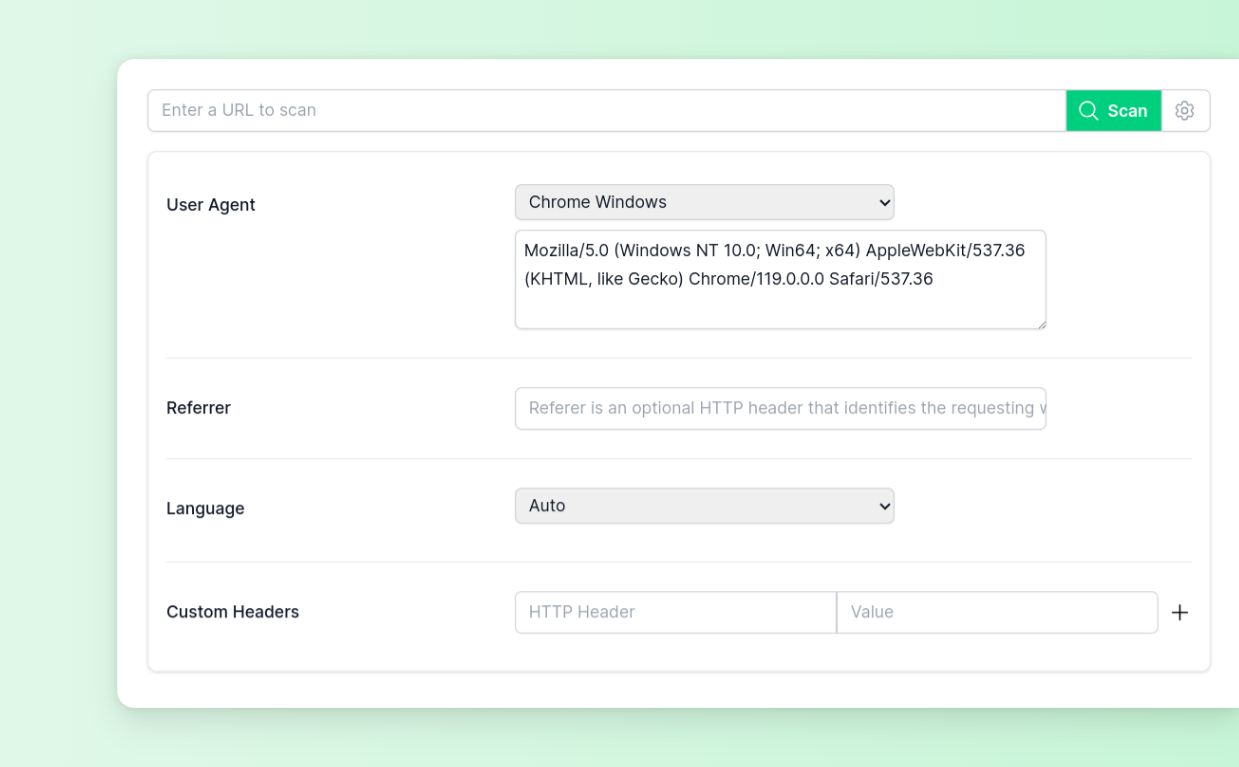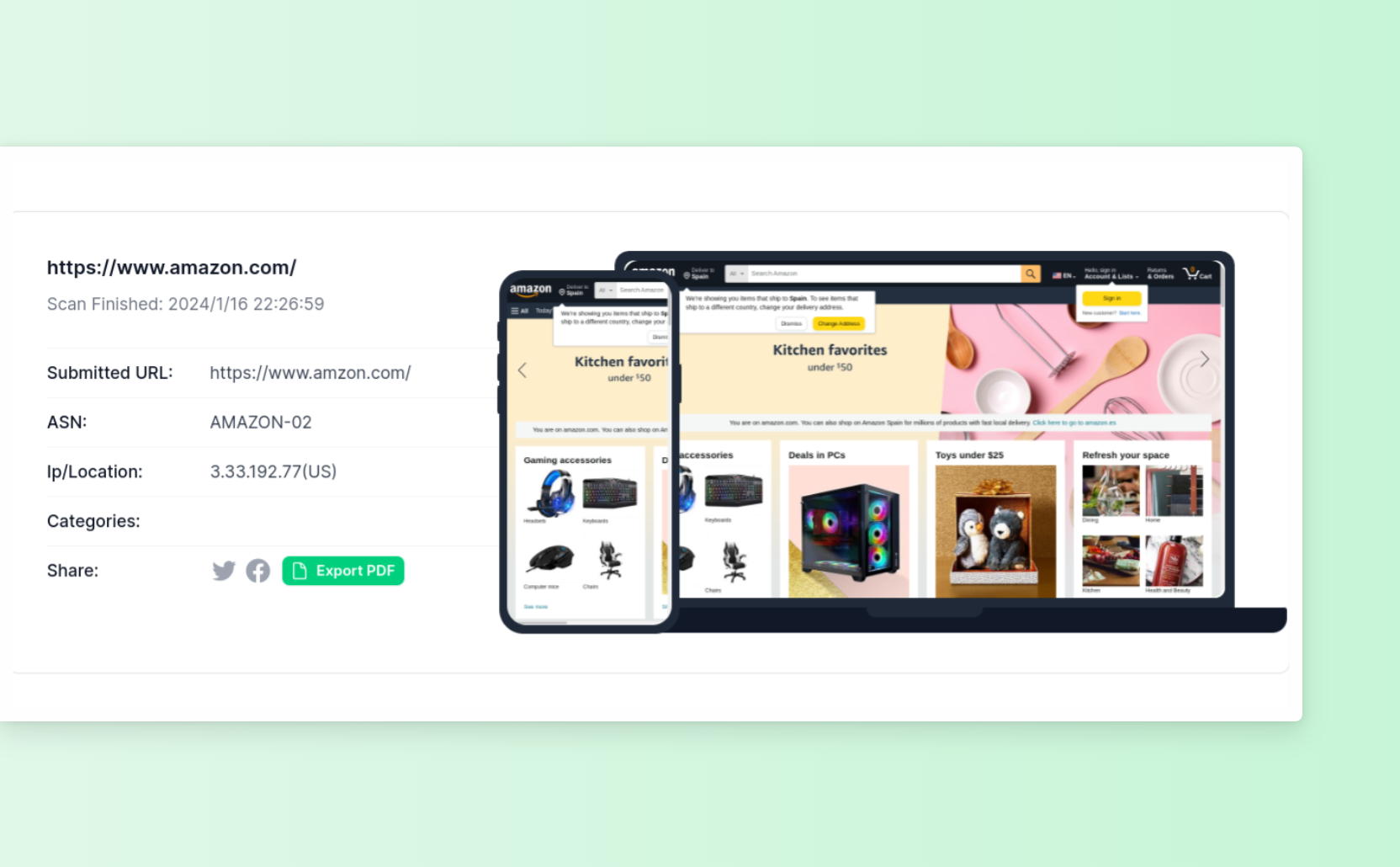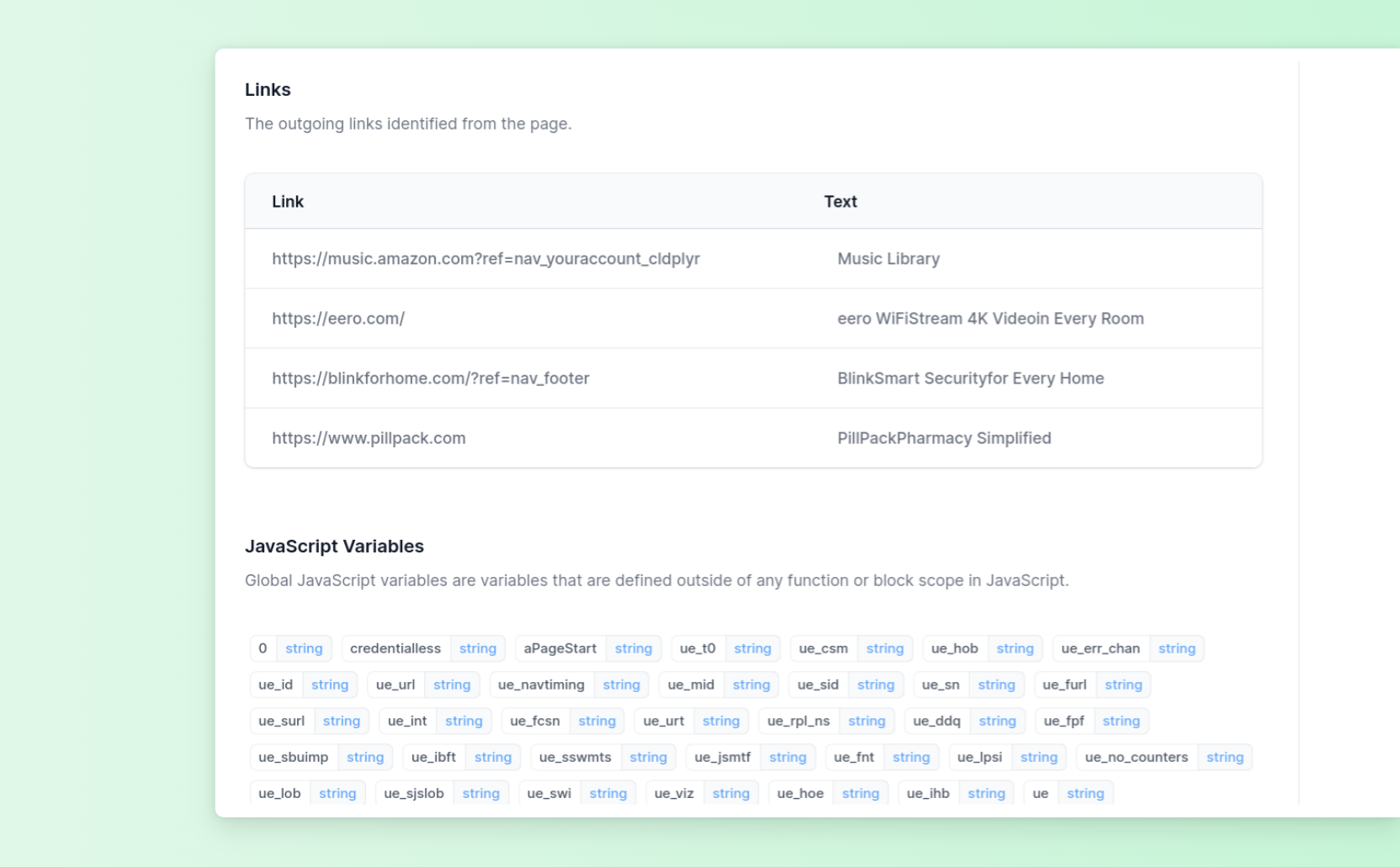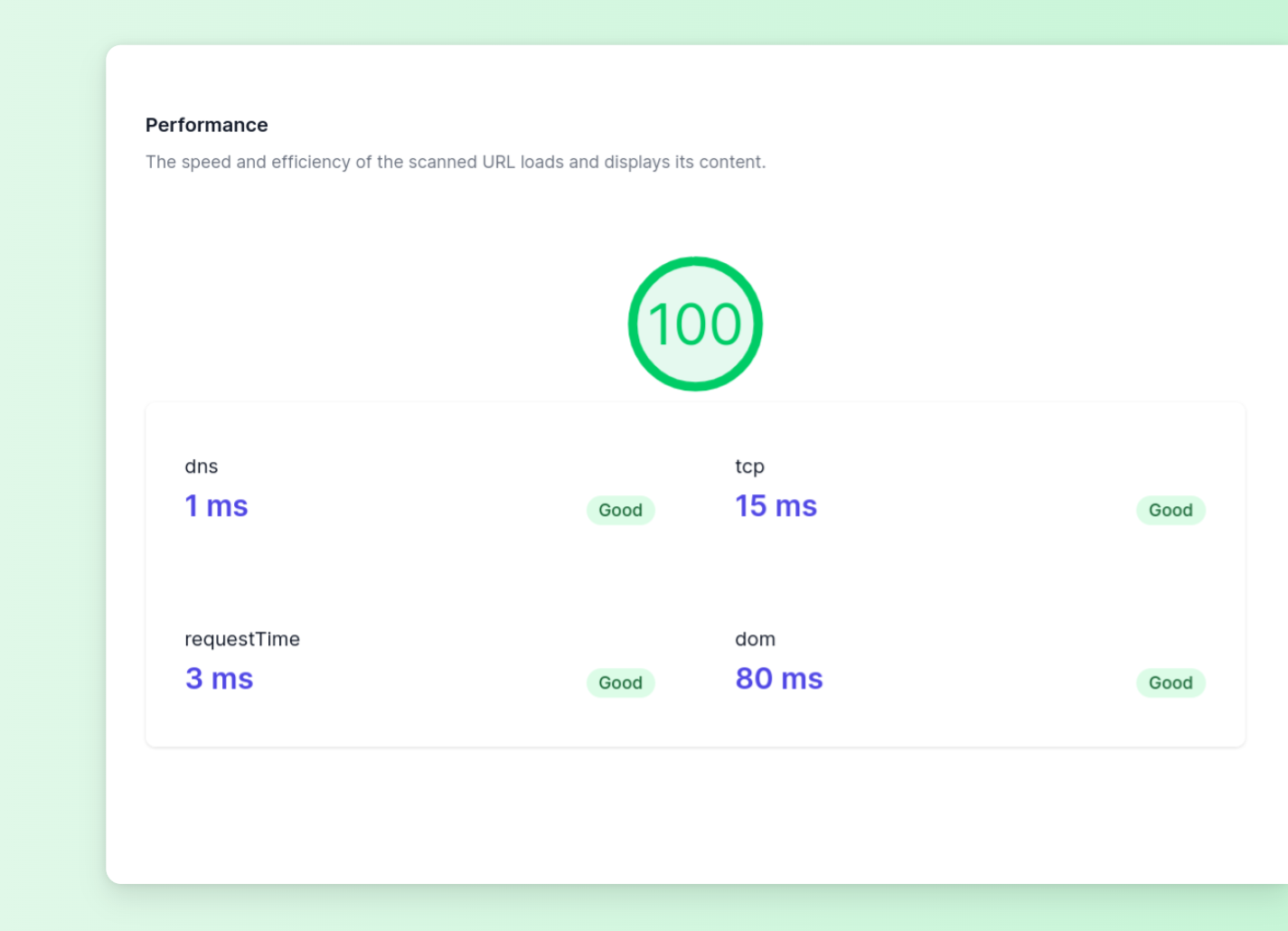Tiny ScanURL Scan and Analysis Tool
Effortlessly Dive into URL Details
When it comes to understanding the intricacies of a website, having the right tools at your disposal can make a world of difference. That#&39;s where Tiny Scan comes into play. It is a powerful URL scanner designed to provide you with valuable insights and information about any given URL. Whether you#&39;re a website owner, a digital marketer, or an SEO professional, Tiny Scan can be an invaluable asset in your arsenal.
With Tiny Scan, you can effortlessly scan a website and gather a wealth of information to aid in your analysis. By inputting a URL, you unlock a treasure trove of data related to that specific website. Let#&39;s dive into the key features and functionalities that make Tiny Scan a must-have tool for anyone involved in website analysis and optimization.
Recent Scans
Last update: 11/30/2025, 9:02:43 PM| URL | Created | Status |
|---|---|---|
https://blackshades.co.uk/
| 11/30/2025, 9:02:26 PM | success |
https://eranemi.top/
| 11/30/2025, 9:02:26 PM | success |
https://bloombewell.co/lander
| 11/30/2025, 9:02:20 PM | success |
https://texasfishingcharterbooker.com/lander
| 11/30/2025, 9:02:19 PM | success |
https://ffbcaracracha.com/
| 11/30/2025, 9:02:18 PM | success |
https://csr-playland.pages.dev/
| 11/30/2025, 9:02:18 PM | success |
https://beautizen.site/
| 11/30/2025, 9:02:17 PM | success |
https://www.carlockbuild.com/
| 11/30/2025, 9:02:17 PM | success |
https://link-tokpedslot88.space/
| 11/30/2025, 9:02:16 PM | success |
https://www.suplemento.us/
| 11/30/2025, 9:02:15 PM | success |
https://unstoppabledomains.com/d/nexagenomics.com
| 11/30/2025, 9:02:15 PM | success |
https://oidc.us-east-1.amazonaws.com/client/register
| 11/30/2025, 9:02:14 PM | success |
https://curlysahm.com/
| 11/30/2025, 9:02:13 PM | success |
https://canigu.nl/
| 11/30/2025, 9:02:09 PM | success |
https://andiekris.com/
| 11/30/2025, 9:02:08 PM | success |
https://unknownfable.net/
| 11/30/2025, 9:02:07 PM | success |
https://itaprofit.site/
| 11/30/2025, 9:02:07 PM | success |
https://weltenfaedin.de/
| 11/30/2025, 9:02:06 PM | success |
https://jcdart34-dmfio.wordpress.com/
| 11/30/2025, 9:02:05 PM | success |
https://thomasdontdoubt.com/
| 11/30/2025, 9:02:04 PM | success |
Key Features of Tiny Scan
URL Input and Parameter Configuration
Tiny Scan simplifies the process of scanning a URL. You can easily input the desired web address and configure various parameters to tailor the scan according to your specific needs. Here are some of the parameters you can customize:
- User-Agent
- You have the flexibility to choose from a list of commonly used User-Agent strings or input a custom User-Agent. This allows you to simulate different browsers or devices while accessing the URL.
- Referrer
- You can set the Referrer header to simulate a specific referring page. This can be useful for analyzing the behavior of the website based on different referral sources.
- Accept-Language
- By configuring the Accept-Language header, you can mimic specific languages and regions, which can be helpful in assessing how the website adapts its content based on user language preferences.
- Custom HTTP headers
- Additionally, Tiny Scan provides the ability to set custom HTTP headers, enabling you to include any specific headers you require for in-depth analysis or testing.

Obtaining URL Information
Tiny Scan goes beyond surface-level analysis by uncovering valuable information about the URL itself. When you scan a URL using Tiny Scan, you can expect to obtain the following insights:
- IP and Location
- Discover the IP address associated with the URL, as well as the geographical location of the server hosting the website. This information can be crucial for understanding the website's infrastructure and targeting specific regions.
- Desktop and Mobile Screenshots
- Gain visual representations of how the website appears on both desktop and mobile devices. These screenshots can help you assess the website's design, layout, and responsiveness across different platforms.
- ASN (Autonomous System Number)
- Identify the Autonomous System Number associated with the URL. This information provides insights into the organization responsible for hosting the website and can be valuable for competitive analysis or network troubleshooting.

Analysis of HTML Document
The HTML document of a website holds essential information about its structure and content. Tiny Scan allows you to analyze the HTML document and extract valuable data, including:
- Links and Anchor Texts
- Discover all the links present on the webpage, along with their corresponding anchor texts. This information is valuable for understanding the website's internal linking structure and identifying potential optimization opportunities.
- JavaScript Variables and Types
- Gain insights into the JavaScript variables used on the webpage, along with their respective types. This data can help you understand the scripting logic employed by the website and identify any potential issues or optimizations.

Detecting Technology Stack
Understanding the technology stack employed by a website is crucial for various reasons. Tiny Scan automatically detects the technologies used by the website and provides detailed information, including:
- Technology Names and Descriptions
- Get a comprehensive list of the technologies employed by the website, along with detailed descriptions of each technology. This knowledge is beneficial for understanding the website's architecture and infrastructure.
- Detection Methods
- Tiny Scan also provides insights into how the detection of each technology was performed. This information can help you validate the accuracy of the results and gain a deeper understanding of the detection process.

Performance Metrics
Website performance is a critical aspect of user experience and search engine optimization. Tiny Scan equips you with performance metrics that shed light on various aspects of the website's speed and responsiveness, including:
- DNS Resolution Time
- Learn how long it takes for the website's domain name to be resolved to an IP address. Faster DNS resolution can lead to quicker website access.
- TCP Connection Establishment Time
- Understand the time taken to establish a TCP connection with the website's server. Faster connection establishment can contribute to reduced page load times.
- Resource Download Time
- Gain insights into the time it takes to download the website's resources, such as images, scripts, and stylesheets. Optimizing resource download times can significantly improve overall website performance.
- Document Rendering Time
- Discover how long it takes for the website's HTML document to be processed and rendered by the browser. Faster rendering times ensure a smoother user experience.

Additional Information
Apart from the core features mentioned above, Tiny Scan provides additional information that can be valuablefor your analysis:
- DNS Records
- Access detailed information about the DNS records associated with the website, including the A record, CNAME record, MX record, and more. This data can help you troubleshoot DNS-related issues and gain insights into the website's infrastructure.
- SSL Certificate Details
- Obtain information about the SSL certificate used by the website, such as its name, issuance date, and expiration date. This knowledge is crucial for ensuring the website's security and identifying potential vulnerabilities.
- Response HTTP Headers
- Explore the HTTP headers returned by the website's server. These headers contain valuable information about caching, compression, security policies, and more.
- Response Cookies
- Discover the cookies set by the website and analyze their content. This data can provide insights into the website's user tracking, personalization, and authentication mechanisms.

How to Use Tiny Scan
Now that you have an understanding of the key features offered by Tiny Scan, let's explore how to use this powerful tool to scan a URL effectively. Follow these simple steps to make the most out of your website analysis:
Input the URL.
Start by entering the URL you want to scan into the designated input field. Make sure to include the complete URL, including the protocol (e.g., https://www.example.com).Configure Parameters.
Take advantage of the parameter configuration options provided by Tiny Scan. Customize the User-Agent to simulate different browsers or devices. Set the Referrer and Accept-Language headers to mimic specific referral sources and languages.Initiate the Scan.
Once you have inputted the URL and configured the desired parameters, click the Scan button to initiate the scanning process. Sit back and let Tiny Scan work its magic.Review the Results.
After the scan is complete, Tiny Scan will present you with a comprehensive report containing all the gathered information. Take your time to review the results and delve into the various sections, such as URL information, HTML document analysis, technology stack, and performance metrics.Interpret the Findings.
Use the insights provided by Tiny Scan to gain a deeper understanding of the scanned URL. Identify potential areas for improvement, optimization opportunities, or even security vulnerabilities. You can also compare the performance metrics against industry benchmarks to assess the website's speed and responsiveness.Take Action.
Armed with the knowledge obtained from Tiny Scan, you can now take actionable steps to optimize your own website or gain a competitive edge. Implement improvements based on the findings, address any technical issues, or leverage the data to enhance your SEO strategies.
Frequently Asked Questions (FAQ)
Is Tiny Scan a free tool?
- Yes, Tiny Scan offers a free plan that allows you to scan URLs and access basic information about websites. However, for more advanced features and in-depth analysis, they offer premium subscription plans with additional benefits.
How accurate are the technology stack detections performed by Tiny Scan?
- Tiny Scan uses advanced algorithms and techniques to detect the technologies employed by a website. While the detections are generally accurate, it's important to note that technology stack detection can be challenging, especially for websites that employ custom or obscure technologies. It's recommended to verify the results and cross-reference them with other sources for confirmation.
Can I use Tiny Scan for mobile website analysis?
- Absolutely! Tiny Scan provides screenshots of how a website appears on both desktop and mobile devices. This feature allows you to assess the website's design, layout, and responsiveness on different screen sizes. By analyzing the mobile screenshots, you can optimize your website's mobile experience and cater to the growing number of mobile users.
How often should I scan my website with Tiny Scan?
- The frequency of scanning your website with Tiny Scan depends on various factors such as the size of your website, the frequency of updates or changes, and your optimization goals. As a general guideline, it's recommended to perform regular scans, especially after significant updates or changes to your website. This will help you stay on top of any potential issues, monitor performance improvements, and adapt your optimization strategies accordingly.
Can Tiny Scan help with identifying SEO opportunities?
- Absolutely! Tiny Scan provides valuable insights into a website's structure, HTML document, performance metrics, and more. By analyzing this information, you can identify potential SEO opportunities such as optimizing internal linking, improving page load times, enhancing mobile responsiveness, and optimizing meta tags and headings. By leveraging the data provided by Tiny Scan, you can make informed decisions to boost your website's search engine visibility and rankings.
Can Tiny Scan be used for security assessments?
- While Tiny Scan primarily focuses on providing website analysis and optimization insights, it can also unveil certain security-related information such as SSL certificate details and response cookies. While it's not a dedicated security assessment tool, the data obtained from Tiny Scan can be useful for identifying potential security vulnerabilities or expired certificates that may require attention.